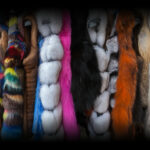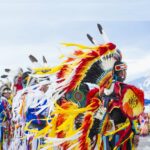Fur-Free Friday is held on the Friday after Thanksgiving (Black Friday), on November 28 this year, to denounce our cruelty, in the name of fashion, to fur-bearing animals, and to campaign for animal rights and protection. Did you know that California was the first state to ban the sale and manufacture of new fur products in 2019? However, this law will not be implemented until 2023. Fur fashion is clothing manufactured with furry animal hides. This clothing is considered a luxury product and is worn mainly by the rich and famous to symbolize social status. Furs used in these clothes are usually sourced from foxes, raccoon dogs, mink, rabbits, seals, wolves, cats, and dogs.
History of Fur-Free Friday
Fur-Free Friday takes its roots from fur in fashion. Fur was among the first materials used for clothing by humans. Around 170,000 years ago, fur was just another piece of clothing worn by both lords and commoners. But that changed between the 14th and 17th centuries. For example, in England, the monarchy introduced sumptuary legislation that determined the type of animal fur worn by the different social classes. Higher-end animal furs such as ermine and gray squirrel were reserved for the aristocracy, while fox and beaver furs went to the middle class and goat and sheepskin for the lower class. However, furry animals were in low supply, so fur use in clothing was limited.
In the 16th century, the fur trade was established among France, England, and Canada, bringing mass fur supply to European countries. That allowed fur, especially beaver fur, to be used for military clothing and everyday accessories, such as hats, hoods, scarves, and muffs. The increasing demand for fur clothing led to the development of fur farms in the 1870s, firmly establishing the fur trade in Europe and North America. This demand was further perpetuated by movie and music stars between the 19th and 20th centuries.
In the 1980s, animal rights organizations began raising awareness on animal skins in fashion and campaigning against fur farming. In 1985, Trans Species Unlimited (T.S.U.) and the Coalition to Abolish the Fur Trade (C.A.F.T.) launched the first non-violent civil disobedience activities in the United States. They protested against fur in fashion at Macy’s stores in New York and California. These same activities were repeated by George Cave and Cres Vellucci of T.S.U. the following year on the Friday after Thanksgiving. That led to the creation of Fur-Free Friday.
Fur-Free Friday timeline
Various animal rights organizations begin protesting against fur farming and fur clothing.
Trans Species Unlimited (T.S.U.) and the Coalition to Abolish the Fur Trade (C.A.F.T.) organize protests against fur in New York and Sacramento, California.
Another protest is organized the following year by T.S.U., leading to the official creation of Fur-Free Friday.
Despite various antifur protests and the introduction of faux fur in the 20th century, natural fur is still in demand, and its sales are increasing.
Fur-Free Friday FAQs
What is the meaning of fur-free?
Fur-free means not using, selling, or promoting any products that are made of natural animal fur.
Which fashion brands are fur-free?
Some of the top fur-free fashion brands include Gucci, Giorgio Armani, Versace, Nieman Marcus Group, Tommy Hilfiger, and Stella McCartney.
Where is Fur Free Friday’s demonstration happening?
Fur Free Friday’s demonstrations annually take place in New York and California. To know where it’s happening this year, check the L.C.A. or W.F.F.F. websites.
How to Observe Fur-Free Friday
Join the fur-free movement
Choose to go fur-free today. Stop wearing any clothing with natural fur or patronizing any fashion brands that still use animal fur. You can also become a fur-free activist and get your local city council to pass a fur-free ordinance. Another way to be part of the movement is to raise awareness of animal rights and the inhumane treatments that animals receive on fur farms.
Participate in the Fur-Free Friday demonstration
Fur-Free Friday is an annual demonstration that occurs in select locations across the United States and globally. Check the Last Chance for Animals (L.C.A.) and World Fur Free Friday (W.F.F.F.) websites for where this year’s demonstrations will be happening. If none is happening in your area, gather friends and individuals with similar interests, and organize a rally.
Donate to animal rights organizations
If you cannot directly get involved in a fur-free campaign, you can donate to organizations supporting the cause. Many organizations in the United States are campaigning for animal rights and laws banning fur in fashion and fur farming. These include People for the Ethical Treatment of Animals (PETA), the Humane Society, Last Chance for Animals (L.C.A.), and Direct Action Everywhere. You can donate to these organizations by visiting their respective websites.
5 Facts About Fur Farming That Will Make Your Eyes Pop
It uses head-to-tail electrocution
Fur-bearing animals are slaughtered using anal and genital electrocution, to limit damage to the fur.
It’s not regulated in the U.S.
The United States has no law protecting animals on fur farms across the country.
It’s a major contributor to climate change
Waste and toxic chemicals from fur farming are released into the air and nearby rivers and streams.
It’s the world’s top fur and skin producer
About 85% of fur and skin used by the fashion and clothing industry come from animals held captive on fur farms.
Fur is banned in most European countries
Over 15 countries in Europe, such as the U.K., Czech Republic, and Norway, have enacted laws to ban fur or phase out fur farming.
Why Fur-Free Friday is Important
Fur-farming destroys biodiversity
Fur farming practices, such as trapping, have led to population depletion of furry animals, including non-target species classified as endangered or threatened. Fur farming has also introduced foreign species to different countries, which currently threatens their biodiversity. For example, the American mink is a species alien to Europe, and its presence in that continent has negatively impacted the population of ground-nesting birds, rodents, and amphibians.
Fur-farming contributes to climate change
According to the World Bank, fur dressing is one of the five worst industries for toxic metal pollution. The number of nitrates produced by this industry from animal waste and carcasses is highly devastating to the surrounding environment and groundwater. Also, the amount of energy consumed for producing one fur coat is 66 times more than that of a synthetic coat.
Fur can be hazardous to fur factory workers and consumers
Fur clothing has been found to contain harmful toxic chemicals, such as formaldehyde and ethoxylates, which cause skin reactions, cancer, and hormonal imbalance. Fur factory workers are also exposed to these chemicals and heavy metals during fur tanning and dressing.
Fur-Free Friday dates
| Year | Date | Day |
|---|---|---|
| 2024 | November 29 | Friday |
| 2025 | November 28 | Friday |
















